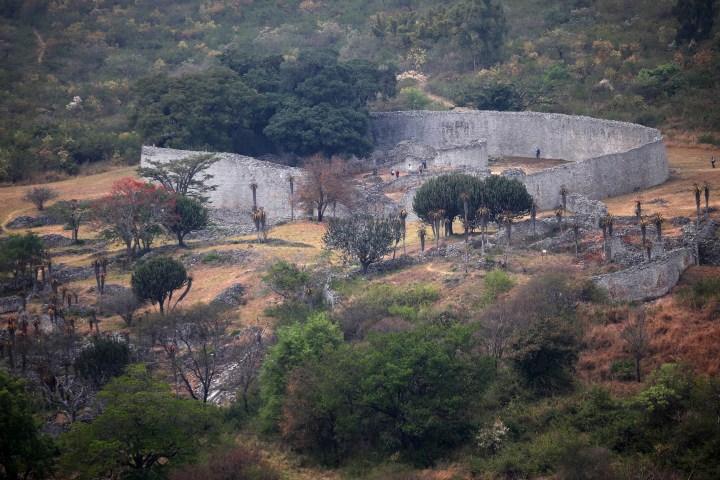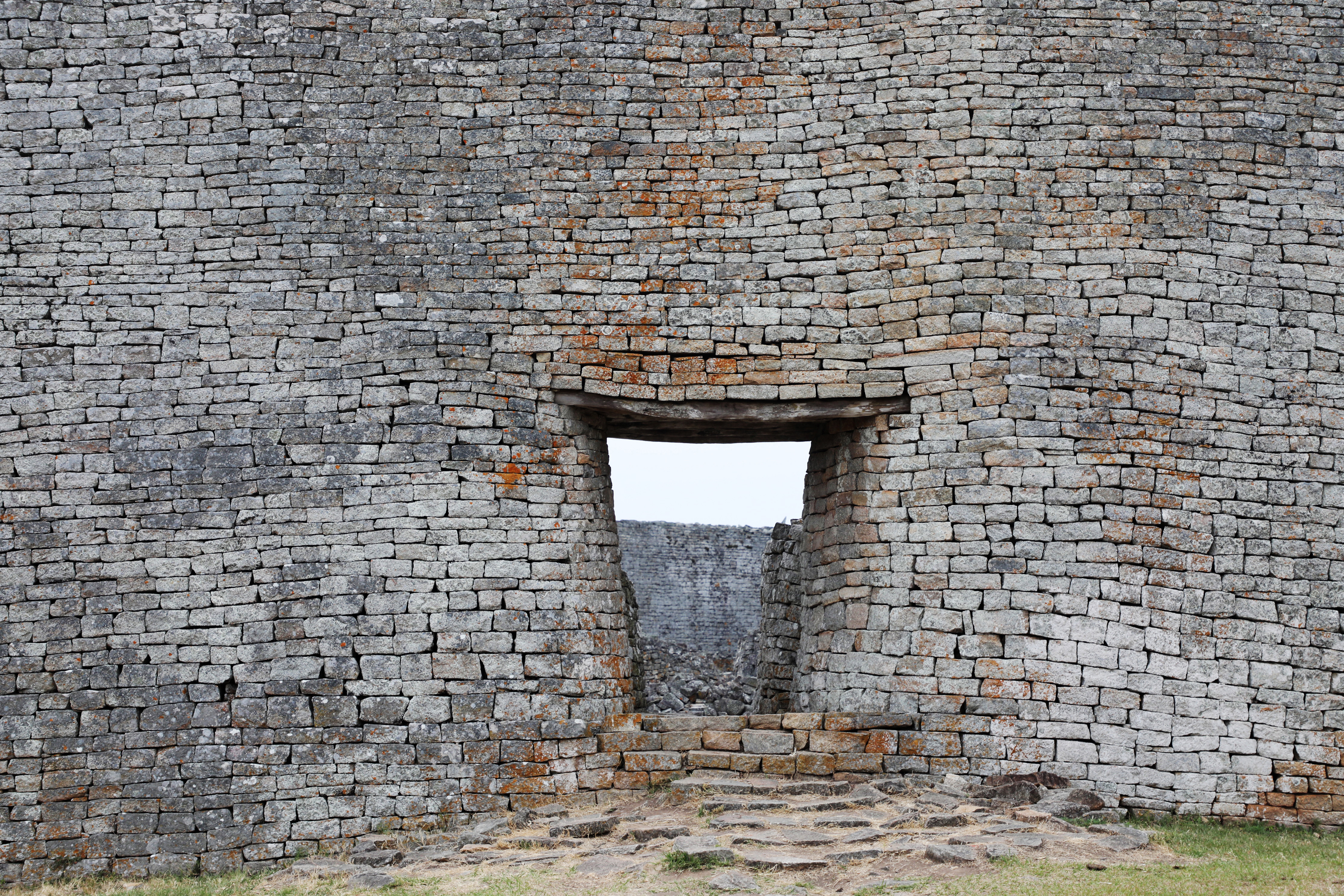BOON FROM THE PAST OP-ED
One stone at a time – how cultural heritage can support economic development in Zimbabwe

The rebuilding of Great Zimbabwe is an opportunity to show how protecting heritage can build a locus of social cohesion that embodies the values of a new society encompassing education, governance, citizenship, gender equality and natural sustainability.
It has been nearly 600 years since the Shona people abandoned the ancient city of Great Zimbabwe. Built and occupied between the 12th and 15th centuries, archaeologists believe this royal capital was once home to 10,000 people. Could the Shona then have imagined that Great Zimbabwe’s high stone walls would still be standing centuries later, or that it could still play a role in the socioeconomic development and cultural heritage of the country now inhabited by their descendants?
Perhaps they believed it would. Archaeologists have found porcelain and beads from China and Persia, as well as Arab coins, during excavations of Great Zimbabwe’s ruins. It was not merely a settlement, but the capital of a state now known to have been a major trading empire in medieval Africa, spanning large parts of modern-day Zimbabwe, Zambia, South Africa, Botswana and Mozambique.
Growing up in Paris, I was introduced to names and places like Zimbabwe through a family friend telling stories of her travels. I became fascinated by the African continent at a young age, wondering why its history remained so little known in Europe.
According to Unesco, Africa is home to only 9% of the sites on its World Heritage List. And risks such as urbanisation, conflict, infrastructure development, deforestation and climate change are placing many of these under direct threat. Africa’s 98 listed World Heritage Sites already include 15 that are classified as being “in danger”. Great Zimbabwe was declared a World Heritage site in 1986, but like many similar sites on the continent, it has not been adequately developed or protected to reach its full potential and its preservation could come under increasing threat.
Traditionally, international development support and cooperation around cultural heritage has often been questioned or criticised. However, thanks to a growing awareness among political decision-makers of the social importance and potential of Africa’s heritage, its conservation is attracting greater focus and attention. The enhancement of heritage is increasingly part of national development strategies that recognise the important and growing role that tourism can play in the continent’s socioeconomic development. This renewed focus has highlighted the urgent need for greater support and resources to help African countries preserve and develop not only their natural heritage through conservation efforts, but also their cultural heritage sites.
Read in Daily Maverick: Victoria Falls heritage status under threat from power plant, hotel, golf course plans, Unesco warns
Read in Daily Maveric: Thulamela: Africa’s ancient history of civilisation written in the stone walls
The Great Zimbabwe Development Project, funded by France’s Agence Française de Développement, hopes to illustrate just how powerful the developmental leverage of a cultural heritage site can become when it benefits from adequate investment, capacity-building and inclusive development approaches that engage local communities. The project aims to develop the Great Zimbabwe Heritage Site to promote sustainability and inclusive tourism. It will seek to enhance the conservation and preservation of the iconic site and improve its attractiveness as a local, regional and international tourist destination.

Detail of the construction of a wall at the Great Zimbabwe site. (Photo: Belief Nyakudyara / UNOPS)
Importantly, the project is heavily focused on strengthening existing rich local expertise. The Zimbabwean authority managing the site, the National Museums and Monuments of Zimbabwe, will be supported to build Zimbabwean capacity in terms of heritage preservation and enhancement and to develop revenues to make the site economically viable in the long term. This will include the development and refurbishment of the current infrastructure on the site to provide visitors access to facilities that meet international standards.
The rationale behind a project like this is clear: developing a heritage site into a tourist destination can have a substantial impact on the local economy and create jobs, particularly for young people and women. The Great Zimbabwe project aims to amplify a wide range of impacts including community development, empowerment of women, strengthening of art and crafts as well as sustainable enhancement of the site and its natural environment. For example, by scaling up activities at the site’s Shona village craft centre, led by women, the project will maximise economic benefits to the local community.
Visit Daily Maverick’s home page for more news, analysis and investigations
Investment in cultural heritage can have a far more profound impact on development than simply creating jobs by attracting tourists. Heritage can also become a unique driver of development through its far-reaching impact on social cohesion, national pride and creating a sense of belonging. The Great Zimbabwe project has also expanded and inspired other projects in the surrounding Masvingo province that include better biodiversity management to protect natural resources and decreasing greenhouse gas emissions through solar energy.
Read on Daily Maverick: Zimbabwe Wants to Become Africa’s Dubai With Offshore Center
Read on Daily Maverick: New book on Mapungubwe Archive contests history of South African world heritage site
It seems likely that Great Zimbabwe’s founders would agree with this approach. Despite its grandeur and complex economy, its people ultimately had no choice but to desert the city when deforestation and pressure on natural resources meant that the land could no longer support its large population. The thought of this self-inflicted destruction always strikes me, no matter how many times I visit the Great Ruins. In many ways, our current society is facing very similar problems to our forebears at Great Zimbabwe. What remains of their great city is surely warning us not to repeat the same mistakes.
As archaeologists work to maintain and rebuild Great Zimbabwe’s walls, they are in fact building a new centre of excellence that embodies the values of a new society encompassing education, governance, citizenship, gender equality and natural sustainability. DM
Thibaud Delplancke is the outgoing Investment Officer responsible for Zimbabwe and Malawi for AFD, the French Development Agency. He trained as an agronomic engineer at AgroParisTech/University of Paris-Saclay and holds a Master’s degree in International Development from the Paris School of International Affairs/Sciences Po in Paris.















 Become an Insider
Become an Insider
Comments - Please login in order to comment.